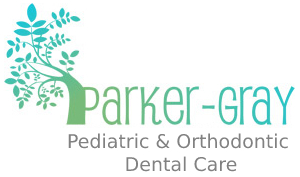Preventive dentistry involves the care for teeth and gums to avoid cavities, gum disease, wear of the teeth, and trauma. Preventive dental care involves the combination of both home and the following dental office activities.
Caries Risk Assessment.
Your child’s first visit will include an evaluation of their risk of getting cavities. This evaluation is based on many factors including your child’s age, biological factors, protective factors, and clinical findings.
Dental cleanings and screenings.
A dental cleaning (prophylaxis) is typically recommended every six months to remove dental plaque and stains you’re unable to remove yourself, as well as to check for signs of tooth decay.
Fluoride Varnish.
Fluoride is a compound that contains fluorine, a natural element. Using small amounts of fluoride on a routine basis can help prevent tooth decay. At your child’s dental appointment topical fluoride is applied to the tooth enamel as a preventive agent.
The fluoride varnish will be brushed or “painted” on the enamel. Children who benefit most from fluoride are those at high risk factors including a history of previous cavities, a diet high in sugar or carbohydrates, orthodontic appliances, and certain medical conditions such as dry mouth.
X-rays.
X-rays enable dentists to look for signs of dental problems that are not visible to the naked eye, such as cavities between teeth and problems below the gum line. X-rays may also be needed to survey erupting teeth and diagnose bone diseases, evaluate the results of an injury or plan orthodontic treatment.
Pediatric dentists are particularly careful to minimize the exposure of child patients to radiation. With contemporary safeguards, the amount of radiation received in a dental x-ray examination is extremely small. In addition, your child will wear a lead body apron and shields for protection. Our practice utilizes digital x-rays and proper shielding to assure that your child receives minimal amount of radiation exposure.
Mouth guards.
Mouth guards, particularly a custom-made mouth guard prescribed by your dentist to provide a better fit can be worn during sporting activities to protect against broken teeth. Mouth guards also are used to treat teeth grinding (bruxism), which can wear down teeth.
Orthodontic Evaluation.
A bad bite (malocclusion) can impair eating and speaking, and crooked teeth are hard to keep clean. Correcting an improper bite with orthodontics that may include appliances or the use of dental braces limits the possibility of future dental problems. Your pediatric dentist may recommend an orthodontic evaluation if needed.
Sealants.
Sealants protect the grooved and pitted surfaces of the teeth, especially the chewing surfaces of back teeth where most cavities in children are found. They are made of clear or shaded plastic. Sealants are applied to the teeth to help keep them cavity-free.
Sealants are usually placed on teeth that are at the most risk for decay; the six-year and twelve-year molars. They may also be recommended on permanent premolars and primary molars.
The application of a sealant is quick and comfortable. It takes only one visit. The tooth is first cleaned and dried. The sealant is then flowed into the grooves of the tooth and allowed to harden with a special light. Your child will be able to eat right after the appointment.


